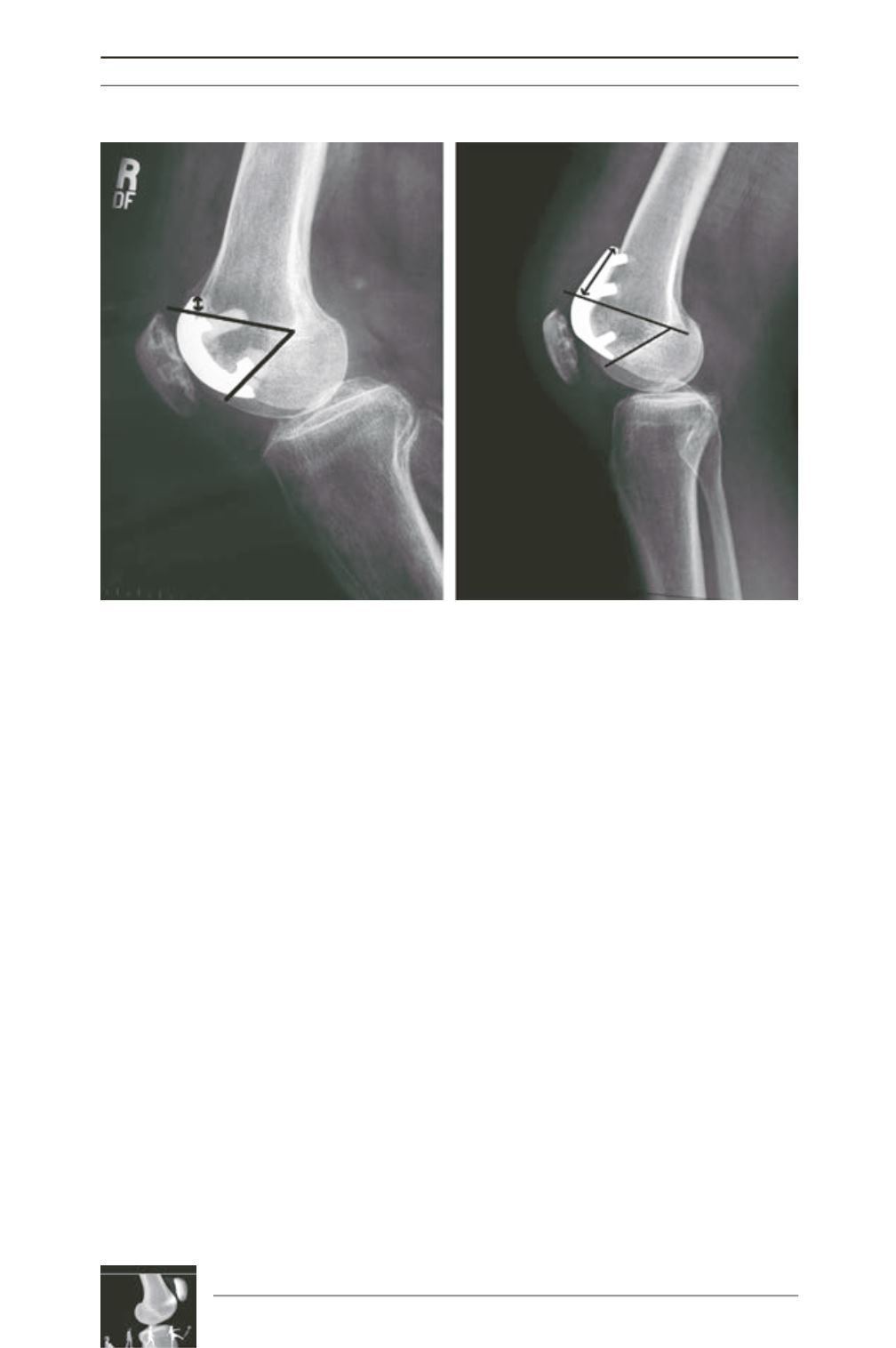

M. Odumenya, S.J. Krikler, A.A. Amis
290
means the position of the trochlear prosthesis
in the coronal plane varies considerably and
may affect the pattern of patellar tracking [13]
especially in patients with a propensity to track
laterally. Amis
et al.
[14] also established that
lateral patellar shift is well controlled with a
steep lateral trochlear facet and confirmed the
difference in loading profile of the lateral and
medial facet (60:40) which suggests the lateral
facet should be relatively larger to accommo
date this. The third-generation designs such as
the FPV® Patello-Femoral Replacement
(Wright Medical Technology Inc., Arlington,
Tennessee), Journey®PFJ (Smith&Nephew®,
Memphis, Tennessee) and Zimmer Gender
Solutions PFJ have been designed as
asymmetrical sided prostheses based on these
biomechanical concepts.
Currently, there are no published data reporting
mid to long-term outcomes on these prostheses,
but the short-term results are promising [15,
16] Although these are all asymmetrical
designs, each implant has a unique selling
point. The FPV trochlear prosthesis was
designed to emulate the normal anatomical
trochlea. The lateral facet of the trochlear
groove is steeper and has a larger surface area
than the medial facet. In contrast to the Avon,
the sulcus angle is even wider, measuring 140°.
The sagittal arc of curvature is 90°, similar to
the Avon, and therefore it matches the distal
femur. Although shorter than the Avon, the
proximal extension of the anterior flange is
long enough to remain in contact with the
patella in full knee extension. Due to the
congruent nature of the trochlear and patellar
components, accurate positioning of both
components is paramount. Unlike the FPV, the
Journey PFA, another asymmetrical third-
generation prosthesis, based on the GENESIS®
II Total Knee System (Smith & Nephew
Fig. 2A-B : [A] The short anterior flange of the Lubinus prosthesis causes the patella to catch or sublux as
it moves from the native femoral articular surface to the prosthesis in the initial 30° of knee flexion. [B] The
Avon prosthesis has a much longer proximal extension of the anterior flange ensuring the patellar
component remains in articulation with the trochlear component in full extension.
Permission to use image granted by copyright owners Lippincott Williams & Wilkins. Lonner JH, Patellofemoral
arthroplasty: pros, cons and design considerations. Clin Orthop 2004; 428: 158-65.
A
B











